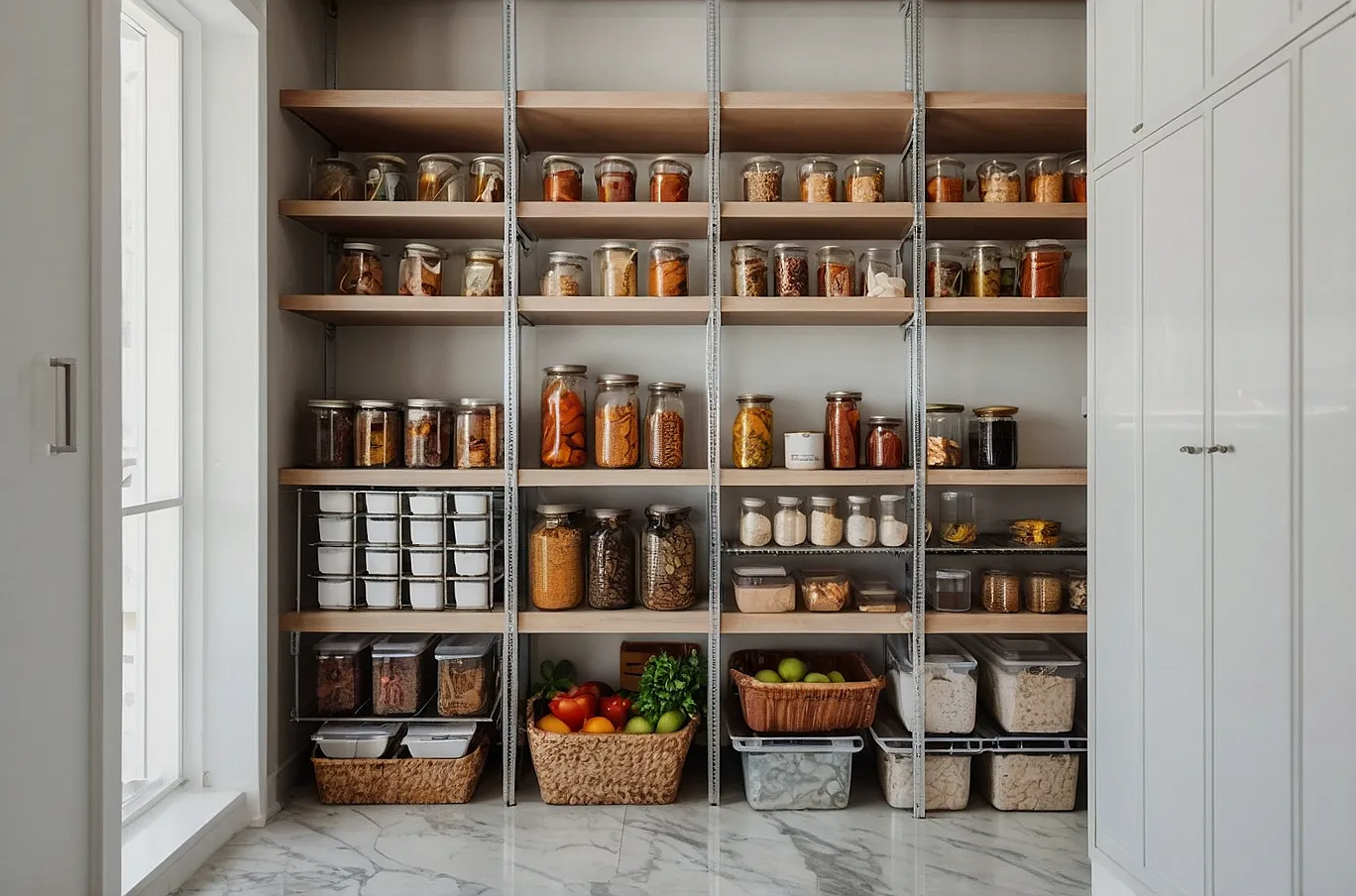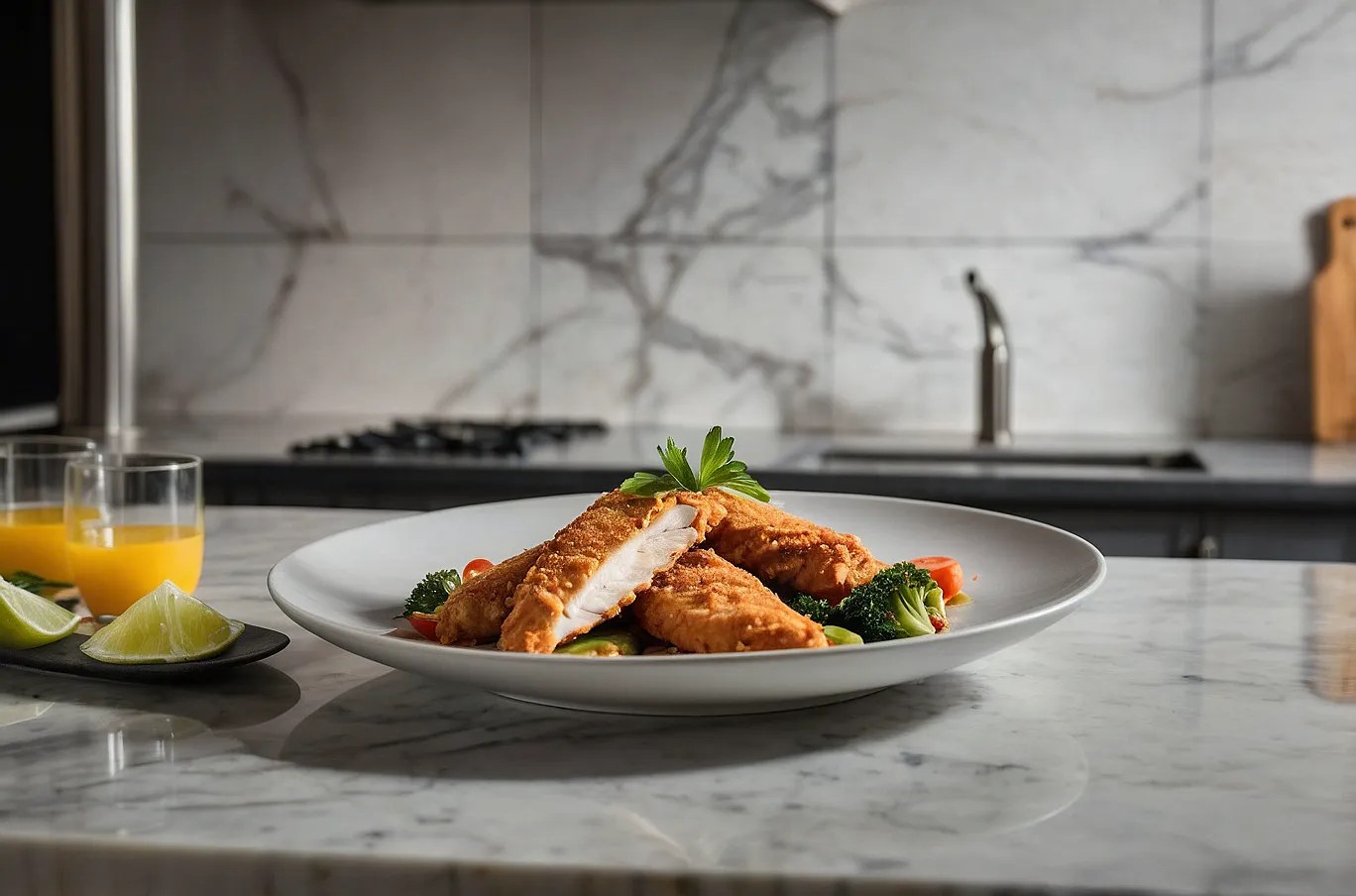 Other
OtherOne-Stop Meal Prep for the Entire Family: Your Ultimate Guide
As a young, busy mother, you’re constantly juggling a million things – childcare, work, household chores, and the endless quest to keep everyone fed. The thought of preparing wholesome, delicious meals every single day can feel like another monumental task added to an already overflowing plate. This is where the magic of One-Stop Meal Prep for the Entire Family comes in. Imagine reclaiming your evenings, reducing kitchen stress, and ensuring your loved ones enjoy nutritious, homemade meals without the daily scramble. It's not just about cooking in advance; it's about creating an efficient system that caters to everyone's tastes and dietary needs, simplifying your life significantly.
This comprehensive guide will walk you through the process of transforming your kitchen routine from chaotic to calm. We’ll explore how to strategize your grocery runs, maximize your cooking sessions, and store your culinary creations so they stay fresh and ready to eat. Get ready to embrace a new era of effortless meal times, more family bonding, and less time spent wondering, "What's for dinner tonight?" Say goodbye to last-minute takeout and hello to a well-fed, happy family, all thanks to a smarter approach to meal preparation.
Understanding the Benefits of Family Meal Prep
Embarking on a meal prep journey for your family offers a cascade of advantages that extend far beyond simply having food ready to eat. It's a strategic move towards a more organized, healthier, and less stressful household environment. For busy mothers, particularly those with young children, optimizing kitchen processes is a game-changer.
Reclaim Your Time and Reduce Stress
One of the most significant gains from a robust family meal planning strategy is the invaluable gift of time. By dedicating a few hours once or twice a week to prepare components or entire dishes, you free up countless hours during busy weekdays. This means more time for playing with your children, pursuing hobbies, or simply relaxing after a long day. The reduction in daily decision-making around meals also significantly lowers mental load and stress, paving the way for more peaceful evenings.
Promote Healthier Eating Habits for Everyone
When you're preparing meals at home, you have complete control over the ingredients. This allows you to prioritize fresh, whole foods, limit processed items, and reduce unhealthy fats, sugars, and sodium often found in convenience foods and restaurant meals. Regularly serving nutritious meals for busy parents and growing children fosters healthy eating habits that can last a lifetime, ensuring balanced nutrition for kids and adults alike. It’s an investment in your family’s long-term wellness.
Setting Up Your One-Stop Meal Prep Kitchen
A successful approach to preparing meals for the entire family begins with a well-organized and equipped kitchen. Thinking of your kitchen as a command center for efficient kitchen strategies can make all the difference, transforming a daunting task into a seamless operation.

Essential Tools and Equipment
You don't need a gourmet kitchen, but having the right tools can drastically streamline your meal prep efforts. Consider investing in items that speed up chopping, cooking, and storage. These include:
- High-Quality Knives: A sharp chef's knife and a good paring knife are indispensable for efficient chopping.
- Cutting Boards: Multiple boards prevent cross-contamination (e.g., one for raw meat, one for produce).
- Large Pots and Pans: Essential for cooking in bulk, like big batches of grains or stews.
- Food Processor/Blender: Saves time on chopping, shredding, and pureeing.
- Airtight Food Storage Containers: Glass or BPA-free plastic containers are crucial for keeping prepped food fresh. Invest in various sizes and shapes.
- Slow Cooker/Instant Pot: Excellent for hands-off cooking of large batches of protein or stews.
Organizing Your Pantry and Fridge
A tidy pantry and fridge are the backbone of streamlined grocery shopping and meal preparation. Group similar items together, use clear containers for dry goods, and label everything with dates. This not only helps you quickly find what you need but also prevents food waste by allowing you to see what you have on hand and use items before they expire. Consider a "first-in, first-out" system for your perishables to ensure freshness.
Crafting Your Family-Friendly Meal Prep Plan
The core of successful family meal preparation lies in thoughtful planning. This isn't just about picking recipes; it's about creating a flexible meal options system that caters to varying tastes, dietary needs, and the rhythm of your family's week.
Weekly Theme-Based Meal Planning
To simplify decision-making, consider assigning themes to different days of the week. For instance, "Meatless Monday," "Taco Tuesday," "Pasta Wednesday," "Soup/Salad Thursday," and "Pizza Friday." This framework helps narrow down recipe choices and makes family meal planning less overwhelming. It also encourages variety while keeping things predictable enough for children.
Incorporating Dietary Needs and Preferences
When you're aiming for a one-stop meal prep solution, it's vital to consider everyone's palate and any dietary restrictions. If one family member is gluten-free, or another prefers vegetarian options, try to select recipes that can be easily adapted. For example, a chili can be made with ground meat, while a portion can be set aside and supplemented with extra beans and vegetables for a vegetarian version. Similarly, pasta dishes can offer gluten-free noodle alternatives, ensuring everyone enjoys delicious and healthy eating habits.
Smart Grocery Shopping and Bulk Buying
Strategic shopping is a cornerstone of effective family meal preparation. It’s not just about what you buy, but how you buy it. Focusing on streamlined grocery shopping can significantly cut down on time, reduce food waste, and ultimately save money, making budget-friendly family meals a consistent reality.

Creating an Efficient Shopping List
Before you even step foot in the grocery store, a detailed and organized shopping list is paramount. Go beyond just listing ingredients; categorize them by sections of the grocery store (produce, dairy, meat, pantry, etc.). This time-saving cooking hack prevents backtracking and ensures you don't forget essential items. Double-check your pantry and fridge against your meal plan to avoid buying what you already have. Consider utilizing grocery list apps that allow family members to add items throughout the week, making it a collaborative effort.
Maximizing Savings with Bulk Purchases and Sales
For items you use frequently and that have a long shelf life, buying in bulk can lead to substantial savings. Think grains, dried beans, pasta, canned goods, and certain frozen vegetables. Keep an eye out for sales on meats, poultry, and fish, which can often be bought in larger quantities and frozen for future use. However, only buy in bulk what you know your family will consume before it spoils, preventing food waste and truly contributing to budget-friendly family meals. This strategic approach to stocking your pantry and freezer is a hallmark of efficient kitchen strategies.
Mastering the Meal Prep Session
The actual meal prep session is where your planning comes to life. It’s about more than just cooking; it’s about a systematic approach to preparing components and dishes that will serve your family throughout the week. This is where time-saving cooking hacks truly shine, transforming what could be a lengthy chore into a productive and even enjoyable activity.
Batch Cooking Staples and Components
One of the most effective strategies for one-stop meal prep for the entire family is batch cooking versatile staples. Think about items that can be used in multiple meals or serve as a base for different dishes. Examples include:
- Grains: Cook large batches of quinoa, brown rice, or farro. These can be used for grain bowls, side dishes, or as a base for salads.
- Proteins: Cook chicken breasts (shredded or diced), ground turkey, lentils, or hard-boiled eggs. These are excellent additions to salads, wraps, stir-fries, or as standalone snacks.
- Roasted Vegetables: Chop and roast a variety of vegetables like broccoli, bell peppers, carrots, and sweet potatoes. They make great side dishes, additions to pasta, or toppings for pizzas.
- Sauces and Dressings: Prepare homemade salad dressings, marinades, or versatile sauces (like pesto or tomato sauce) that can elevate various meals.
This approach significantly cuts down on daily cooking time, making dinner assembly a breeze.
Prepping Produce and Other Ingredients
Beyond cooking, simply prepping your produce can be a massive time-saver. When you get home from the grocery store, take a dedicated hour to wash, chop, and store fruits and vegetables. This means having pre-chopped onions, bell peppers, carrots, and celery ready for stir-fries, soups, or omelets. Wash and dry salad greens, and store berries in containers with good air circulation. Peeling and dicing potatoes or sweet potatoes for roasting later also helps. This proactive step ensures that when it’s time to cook, much of the tedious work is already done, leading to stress-free dinner solutions.
Storage Solutions for Freshness and Safety
Proper storage is just as critical as the cooking process itself for a successful one-stop meal prep for the entire family. Incorrect storage can lead to food spoilage, potential health risks, and ultimately, wasted effort and money. Understanding the best practices ensures your nutritious meals for busy parents and kids remain fresh and safe to eat throughout the week.
Airtight Containers and Proper Labeling
The foundation of effective food storage lies in using high-quality, airtight containers. Glass containers are often preferred as they are non-reactive, durable, and can go from freezer to oven (without lids). BPA-free plastic containers are also a good option. Ensure containers are completely dry before storing food to prevent moisture build-up, which can lead to spoilage. Crucially, label every container with the date it was prepared and its contents. This simple act prevents confusion and helps you track freshness, especially when dealing with various family meal planning components.
Refrigeration and Freezing Guidelines
Most prepped meals and components can be safely stored in the refrigerator for 3-4 days. Cooked meats, poultry, and fish should be consumed within this timeframe. Cooked grains and vegetables typically last 4-5 days. For longer storage, the freezer is your best friend. Many dishes, such as soups, stews, casseroles, cooked grains, and even some baked goods, freeze beautifully for up to 3 months or more. When freezing, ensure food is completely cooled before transferring to containers, leave some headspace for expansion, and label clearly. Proper cooling and sealing are essential for maintaining food quality and safety, contributing to healthy eating habits even on the busiest days.
Adapting Meals for Diverse Tastes
One of the beauties of a truly effective one-stop meal prep system for families is its inherent flexibility. Not every family member will love every dish, and that’s perfectly fine! The goal is to provide balanced nutrition for kids and adults while offering flexible meal options that satisfy diverse palates without requiring you to cook multiple separate meals daily.
Component-Based Assembly
Instead of preparing full, ready-to-eat meals, focus on creating individual components that can be mixed and matched. For instance, if you batch-cook plain chicken, roasted vegetables, and a pot of quinoa, these can then be combined in various ways:
- Chicken & Veggie Bowls: Layer quinoa, chicken, and roasted veggies. Add a pre-made dressing or sauce.
- Chicken Wraps/Sandwiches: Shred the chicken, mix with a little mayo or Greek yogurt, add some pre-chopped lettuce or cucumber.
- Veggie Scramble: Add roasted veggies to scrambled eggs for a quick breakfast or light dinner.
- Soup Addition: Toss leftover chicken and veggies into a quick broth for a simple soup.
This approach allows for customization at mealtime, empowering even picky eaters to create a plate they'll enjoy while still consuming nutritious meals for busy parents’ peace of mind.
Kid-Friendly Modifications and Engagement
Involving children in the meal prep process, even in small ways, can significantly increase their willingness to try new foods. Let them help wash vegetables, stir ingredients, or pack their own lunchboxes from the prepped components. For particularly discerning eaters, having a "deconstructed" meal where components are separate can be helpful. For example, instead of a stir-fry, offer plain rice, cooked chicken pieces, and a side of steamed broccoli. You can also offer a "dip" or sauce on the side. This strategy provides stress-free dinner solutions by minimizing mealtime battles and encouraging healthier choices, making your efforts truly a one-stop meal prep for the entire family solution.
Troubleshooting Common Meal Prep Challenges
Even with the best intentions and a solid plan for one-stop meal prep for the entire family, challenges can arise. It’s important to view these as learning opportunities and adjust your approach, rather than getting discouraged. Persistence and adaptability are key to making this system work long-term for your household.
Dealing with Picky Eaters and Food Fatigue
It’s natural for family members, especially children, to sometimes get tired of eating the same thing. To combat food fatigue, focus on variety in your weekly family meal planning. Rotate your recipes regularly, introduce new flavors, and utilize the component-based assembly method mentioned earlier to allow for customization. For picky eaters, continue to offer new foods alongside familiar favorites, without pressure. Sometimes, simply presenting food in a different way or letting them help prepare it can make a difference. Remember, consistency in offering healthy options is more important than immediate acceptance.
Managing Time Constraints and Unexpected Events
Life with a young family is unpredictable, and sometimes, even the most meticulous plans for nutritious meals for busy parents can go awry. If you find yourself short on time for a full meal prep session, aim for "mini-prep." This might involve just chopping vegetables for a few days, cooking a large batch of rice, or simply marinating meat. Having a few go-to, super-fast emergency meals (e.g., pasta with jarred sauce and pre-cooked chicken) is also a lifesaver. Don't strive for perfection; aim for progress and adaptability. A flexible meal options approach means that even small efforts contribute to your overall goal of stress-free dinner solutions and healthier eating habits.
Embracing the Lifestyle: Beyond the Plate
Adopting a one-stop meal prep approach for your family is more than just a series of cooking sessions; it's a lifestyle shift that brings broader benefits to your home. It's about cultivating efficient kitchen strategies that permeate other areas of your daily routine, fostering a sense of calm and control.
The Ripple Effect on Family Dynamics
When meal times become less chaotic and more predictable, the entire family benefits. Less stress for parents means a more relaxed atmosphere, leading to more quality time together around the dinner table. Children learn the importance of planning and organization by observing your efforts. Plus, the consistent availability of healthy, home-cooked food contributes directly to the well-being and energy levels of every family member. This is a foundational step towards building strong, healthy eating habits and a more harmonious home life.
Long-Term Sustainability and Adaptability
The beauty of the one-stop meal prep system is its inherent adaptability. As your children grow, their tastes and needs will change, and your meal prep routine can evolve with them. You might incorporate more complex recipes, involve older children more in the cooking process, or adjust portion sizes. The principles of smart grocery shopping, batch cooking, and efficient storage remain constant, providing a sustainable framework for family meal planning for years to come. This investment in time-saving cooking hacks and budget-friendly family meals today will pay dividends in peace of mind and healthy living for your family’s future.
Embracing One-Stop Meal Prep for the Entire Family is one of the most powerful steps a busy mother can take to simplify her life, nourish her loved ones, and reclaim precious time. It’s a journey, not a destination, and every small step you take towards a more organized kitchen and thoughtful meal planning will contribute to a happier, healthier, and more relaxed family life. Start small, be patient with yourself, and enjoy the delicious dividends of your efforts!
